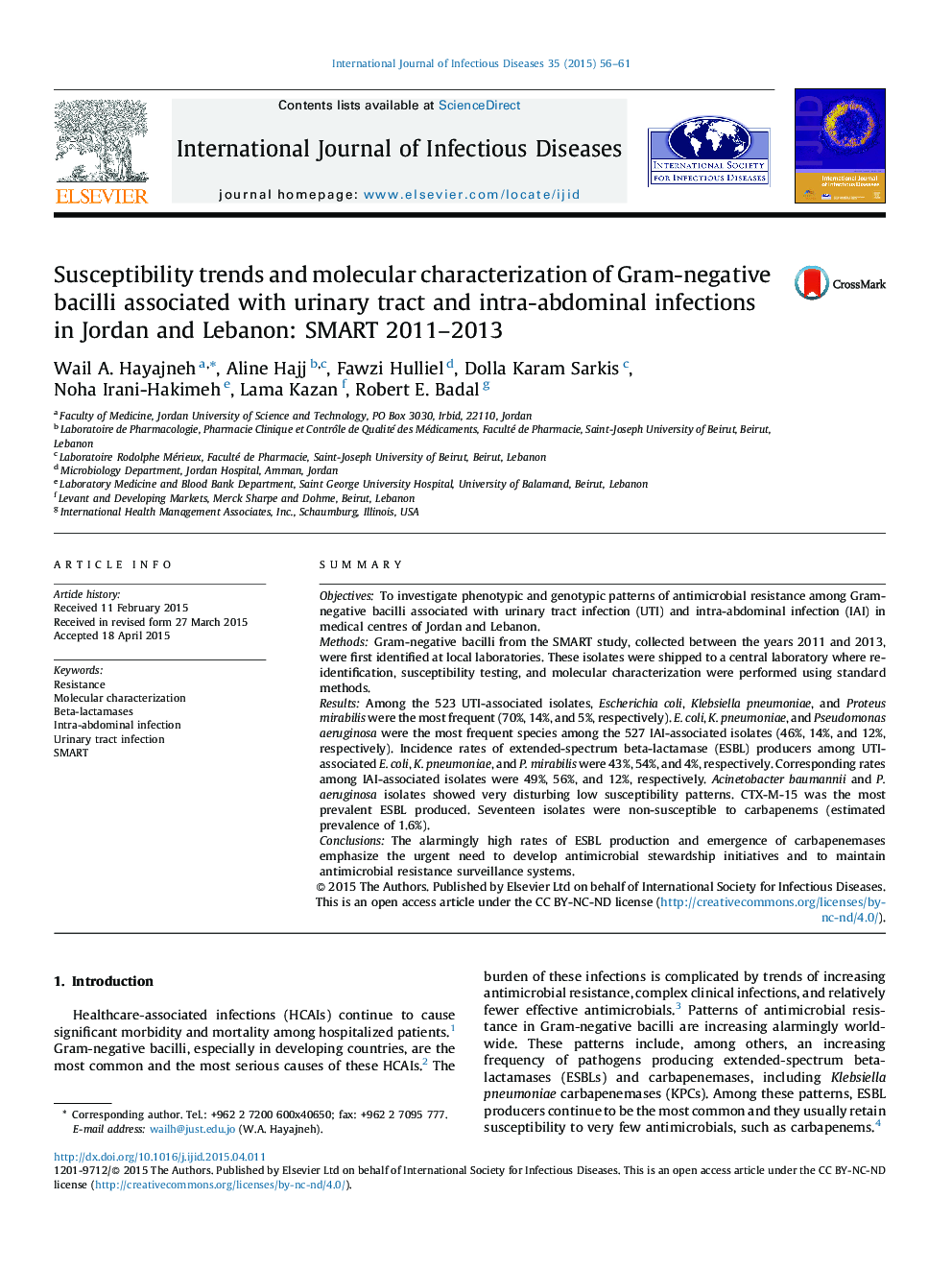| کد مقاله | کد نشریه | سال انتشار | مقاله انگلیسی | نسخه تمام متن |
|---|---|---|---|---|
| 3362078 | 1592060 | 2015 | 6 صفحه PDF | دانلود رایگان |

• We report resistance trends in Gram-negative bacilli from Jordan and Lebanon.
• Urinary tract and intra-abdominal infections occurring between 2011 and 2013 were followed.
• The overall incidence rate of extended-spectrum beta-lactamases (ESBLs) among pooled Gram-negative bacilli was 44%.
• CTX-M-15 was the most prevalent ESBL, with many isolates producing multiple enzymes.
• The prevalence of carbapenem-non-susceptible Enterobacteriaceae was 1.6%.
SummaryObjectivesTo investigate phenotypic and genotypic patterns of antimicrobial resistance among Gram-negative bacilli associated with urinary tract infection (UTI) and intra-abdominal infection (IAI) in medical centres of Jordan and Lebanon.MethodsGram-negative bacilli from the SMART study, collected between the years 2011 and 2013, were first identified at local laboratories. These isolates were shipped to a central laboratory where re-identification, susceptibility testing, and molecular characterization were performed using standard methods.ResultsAmong the 523 UTI-associated isolates, Escherichia coli, Klebsiella pneumoniae, and Proteus mirabilis were the most frequent (70%, 14%, and 5%, respectively). E. coli, K. pneumoniae, and Pseudomonas aeruginosa were the most frequent species among the 527 IAI-associated isolates (46%, 14%, and 12%, respectively). Incidence rates of extended-spectrum beta-lactamase (ESBL) producers among UTI-associated E. coli, K. pneumoniae, and P. mirabilis were 43%, 54%, and 4%, respectively. Corresponding rates among IAI-associated isolates were 49%, 56%, and 12%, respectively. Acinetobacter baumannii and P. aeruginosa isolates showed very disturbing low susceptibility patterns. CTX-M-15 was the most prevalent ESBL produced. Seventeen isolates were non-susceptible to carbapenems (estimated prevalence of 1.6%).ConclusionsThe alarmingly high rates of ESBL production and emergence of carbapenemases emphasize the urgent need to develop antimicrobial stewardship initiatives and to maintain antimicrobial resistance surveillance systems.
Journal: International Journal of Infectious Diseases - Volume 35, June 2015, Pages 56–61